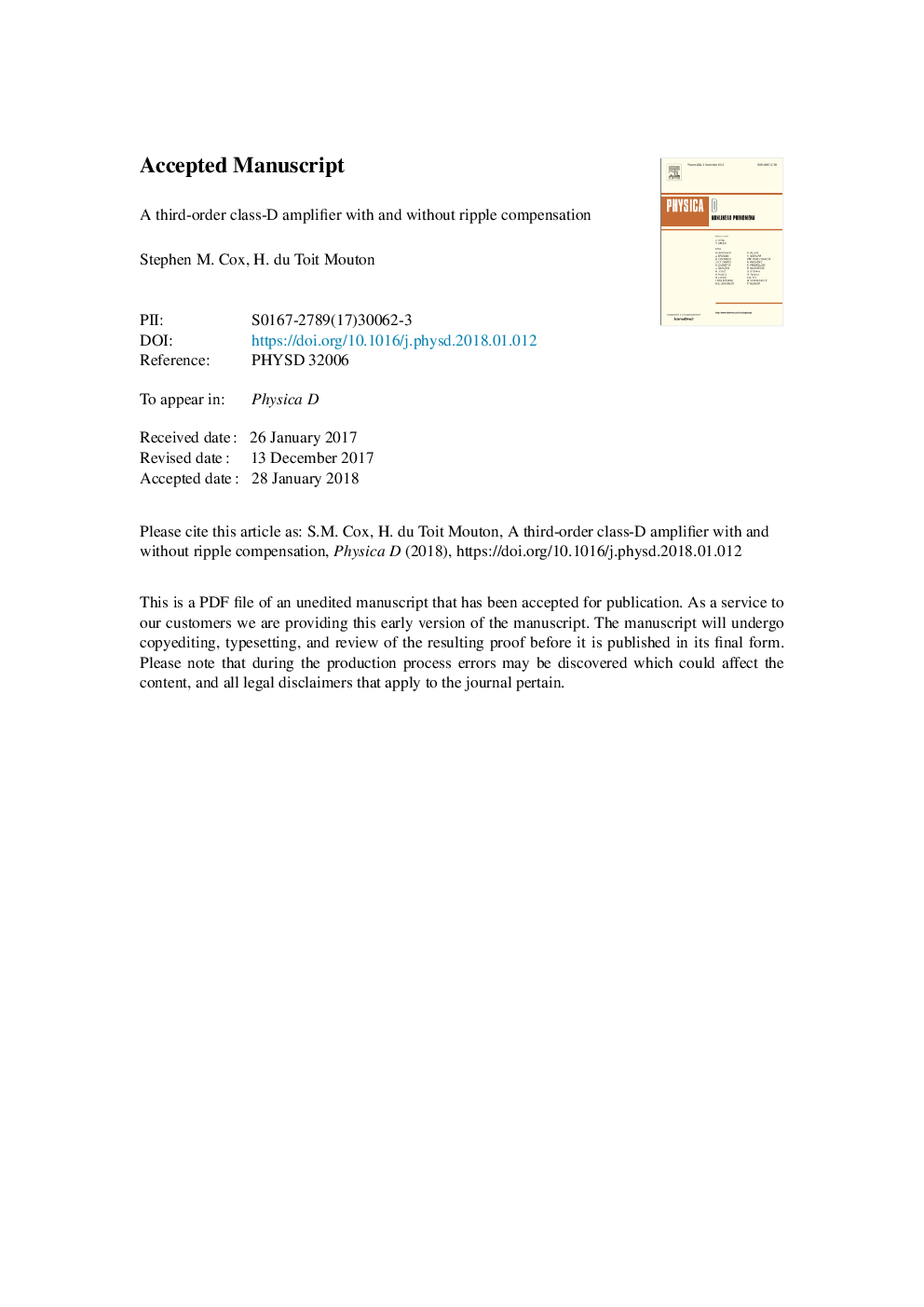| Article ID | Journal | Published Year | Pages | File Type |
|---|---|---|---|---|
| 8256236 | Physica D: Nonlinear Phenomena | 2018 | 34 Pages |
Abstract
We analyse the nonlinear behaviour of a third-order class-D amplifier, and demonstrate the remarkable effectiveness of the recently introduced ripple compensation (RC) technique in reducing the audio distortion of the device. The amplifier converts an input audio signal to a high-frequency train of rectangular pulses, whose widths are modulated according to the input signal (pulse-width modulation) and employs negative feedback. After determining the steady-state operating point for constant input and calculating its stability, we derive a small-signal model (SSM), which yields in closed form the transfer function relating (infinitesimal) input and output disturbances. This SSM shows how the RC technique is able to linearise the small-signal response of the device. We extend this SSM through a fully nonlinear perturbation calculation of the dynamics of the amplifier, based on the disparity in time scales between the pulse train and the audio signal. We obtain the nonlinear response of the amplifier to a general audio signal, avoiding the linearisation inherent in the SSM; we thereby more precisely quantify the reduction in distortion achieved through RC. Finally, simulations corroborate our theoretical predictions and illustrate the dramatic deterioration in performance that occurs when the amplifier is operated in an unstable regime. The perturbation calculation is rather general, and may be adapted to quantify the way in which other nonlinear negative-feedback pulse-modulated devices track a time-varying input signal that slowly modulates the system parameters.
Related Topics
Physical Sciences and Engineering
Mathematics
Applied Mathematics
Authors
Stephen M. Cox, H. du Toit Mouton,
